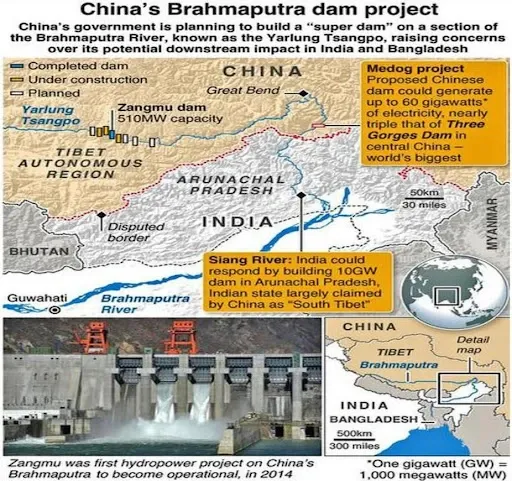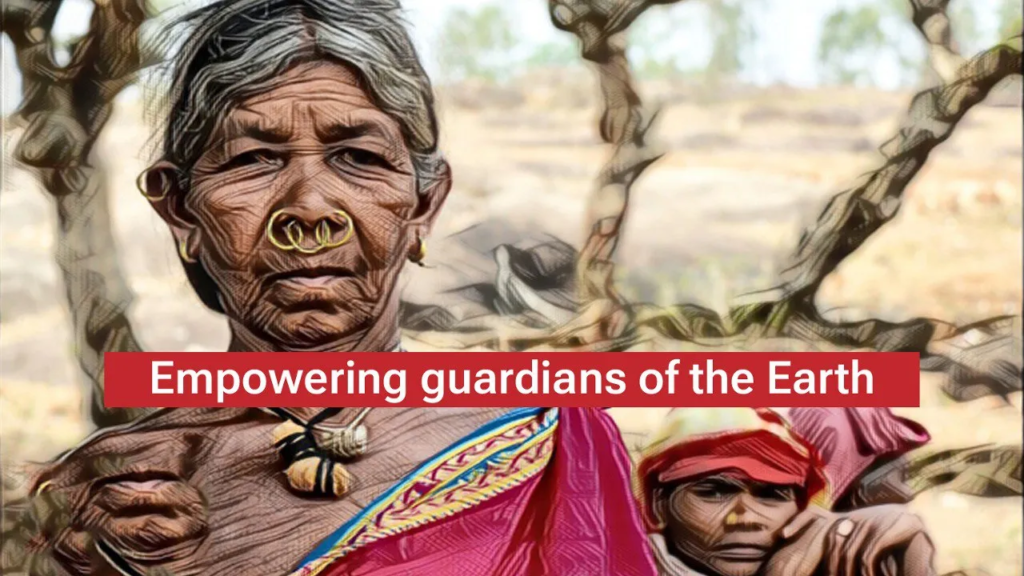How the H5N1 bird flu threatens the very existence of birds and mammals
Source: The Indian Express
Syllabus: GS Paper III: Environment, Biodiversity, and Security
Avian Influenza (H5N1) Outbreak: A Case of Cross-Species Transmission in India
Context:
India has reported its first confirmed case of avian influenza (H5N1) transmission to mammals, marking a critical moment in the country’s zoonotic disease management efforts. Three tigers and one leopard at a Nagpur rescue center succumbed to the virus in December 2024. This rare instance of cross-species transmission has prompted the Union Government to issue nationwide advisories for heightened vigilance and containment.
Key Details:
Avian Influenza (H5N1)
- Overview:
- H5N1 is a highly infectious subtype of the Influenza A virus, primarily affecting poultry and wild birds.
- Wild waterfowl such as ducks and geese are known carriers, often spreading the virus asymptomatically.
- Human infection is rare but carries a high mortality rate of approximately 60%.
- Evolution and Global Spread:
- Originated in Guangdong, China (1996).
- Rapid global spread since 2020, affecting continents like Africa, Asia, the Americas, and Antarctica by 2024.
- Impact:
- Farm Birds: Major outbreaks in overcrowded poultry farms.
- Wild Birds: Severe mortality across species, including endangered birds like California condors.
- Mammals: Cross-species infections among terrestrial, farmed, and marine mammals, raising concerns over viral reassortment and zoonotic potential.
Current Outbreak in India:
- Significance:
- India’s first documented case of H5N1 among mammals, with fatalities involving three tigers and one leopard in Nagpur.
- Raises concerns about species barrier breaches in zoonotic diseases.
- Suspected Source:
- Contaminated chicken meat.
- Confirmed via post-mortem samples at the National Institute of High Security Animal Diseases (NIHSAD), Bhopal.
Government Response:
- National Advisory:
- States urged to quarantine infected and symptomatic animals.
- Zoos directed to enhance surveillance, follow the National Action Plan for Prevention and Containment, and monitor wildlife for symptoms.
- Containment Measures:
- Temporary closure of affected establishments to visitors.
- Strengthened biosecurity measures, including disinfection and restricted personnel movement.
- Deployment of a National Joint Outbreak Response Team.
- Screening of human contacts for early detection of zoonotic transmission.
- Staff Protection:
- Mandatory use of PPE for zoo personnel.
- Health screenings and hygiene training for staff.
- One-Health Approach:
- Emphasis on integrating human, animal, and wildlife health measures.
- Holistic management to mitigate zoonotic risks.

Way Forward:
- Policy Recommendations:
- Development of comprehensive guidelines for handling cross-species transmission.
- Enhancing public awareness about zoonotic diseases through targeted campaigns.
- Strengthening diagnostic and research capacities in zoonotic disease management.
- Global Collaboration:
- Sharing data and best practices with international bodies like WHO and FAO.
- Leveraging global expertise in surveillance and containment.
- Long-Term Mitigation:
- Focused investment in biosecurity infrastructure.
- Expansion of the One-Health framework to include local communities and private stakeholders.
Conclusion:
The Nagpur H5N1 outbreak underscores the need for proactive surveillance, robust containment protocols, and a unified health strategy. As zoonotic diseases increasingly challenge global health security, India must strengthen its frameworks to safeguard both wildlife and human populations.
India needs to prioritise preventive care
Source: The Hindu
Syllabus: GS II HEALTH
Prioritizing Preventive Healthcare: A Strategic Imperative for India
Introduction
India faces a growing healthcare crisis, marked by a rising burden of non-communicable diseases (NCDs) and escalating healthcare costs. While life expectancy is improving, the early onset of diseases and increasing mortality due to NCDs highlight the urgent need to shift from reactive treatment to preventive care. This strategic pivot is essential to alleviate economic pressure on individuals and the healthcare system while improving overall health outcomes.
The Rising Burden of NCDs
- Epidemiological Trends:
- NCDs, such as heart disease, diabetes, stroke, and cancer, account for approximately 65% of all deaths in India (NFHS-5).
- Prevalence of risk factors is high:
- One in four men suffer from hypertension.
- One in eight individuals are diabetic.
- Median age of cancer diagnosis in India is lower than global averages, underscoring the urgency for early detection.
- Economic Implications:
- WHO estimates the economic burden of NCDs in India will exceed ₹280 lakh crore by 2030, translating to ₹2 lakh per household.
- Despite an increase in the Union Budget 2024 health allocation to ₹87,657 crore (13% growth), the expenditure remains insufficient given the scale of the crisis.
Challenges in Preventive Healthcare Adoption
- High Costs of Preventive Screenings:
- Comprehensive health checks in urban centers range from ₹8,000 to ₹15,000, making them unaffordable for many.
- Limited awareness and accessibility in rural areas exacerbate the challenge.
- Stagnant Tax Incentives:
- The ₹5,000 tax deduction under Section 80D for health checks has remained unchanged since its introduction in 2013, despite healthcare inflation of 12-14% annually.

The Case for Preventive Healthcare
- Benefits of Early Detection:
- Regular screenings, particularly for high-risk individuals, can significantly reduce the incidence of severe conditions like cancer and cardiac ailments.
- For every 1,000 individuals screened in a large hospital network, at least three require preemptive interventions, showcasing the efficacy of preventive measures.
- Economic Rationale:
- Enhanced preventive care reduces future healthcare costs and productivity losses, mitigating the financial burden on households and the exchequer.
Policy Recommendations for Preventive Healthcare
- Strengthen Early Intervention Capabilities:
- Utilize Ayushman Bharat Health and Wellness Centres to expand access to preventive screenings.
- Leverage AI-enabled imaging technologies to reduce the cost of large-scale screening programs.
- Encourage Private Sector Participation:
- Partner with private healthcare providers and insurers to offer subsidized screenings for individuals aged 40-60.
- Promote annual or biennial mammograms for women over 40 and other risk-based screenings through public-private collaboration.
- Increase Tax Deduction for Health Checks:
- Revise the existing tax deduction limit from ₹5,000 to ₹15,000 in the Union Budget 2025-26.
- This adjustment is estimated to cost the exchequer ₹5,000 crore but can save significant future healthcare expenditures.
- Innovative Financing Mechanisms:
- Channel proceeds from healthcare cess or the proposed 35% GST on tobacco and sugar products to fund preventive health programs.
- Raise Public Awareness:
- Launch nationwide campaigns to educate citizens on the importance of preventive health checks.
The Path Forward
India must transition from a reactive treatment model to a proactive preventive care system. A three-pronged strategy focusing on early intervention, private sector engagement, and fiscal incentives can create a robust preventive healthcare ecosystem. By prioritizing preventive care, India can not only improve public health outcomes but also ensure economic resilience and reduce the financial burden on its citizens.
Conclusion:
Preventive healthcare is not merely an expenditure but an investment in the nation’s future. Policymakers must act decisively to institutionalize preventive measures, ensuring a healthier and more productive population capable of driving sustainable development.
Implications of China’s Mega-Dam Project
Source: The Hindu
Syllabus: GS II India and Neighborhood relations
Introduction
The Brahmaputra River, a vital transboundary watercourse, originates in the Tibetan Autonomous Region (TAR) of China as the Yarlung Zangbo. Its course spans four riparian nations: China, India, Bhutan, and Bangladesh. The river is crucial for the ecological balance, livelihoods, and geopolitical stability in the Himalayan region. However, China’s decision to construct a 60 GW mega-dam at the Great Bend, near the Medog region, marks a significant shift in the geopolitics of water in the region. India’s planned Upper Siang Dam and Bhutan’s hydropower projects further underscore the intense competition over water resources in the basin.
China’s Mega-Dam Project
China’s approval of the Medog mega-dam project in December 2024, as part of its 14th Five-Year Plan, signals its intent to assert greater control over the Brahmaputra. The Great Bend region, where the river takes a sharp southward turn into India, has immense hydropower potential. However, this project raises serious concerns for downstream nations, particularly India and Bangladesh.
Key Features:
- Scale: The 60 GW hyper-dam is poised to be the largest hydropower project globally.
- Strategic Importance: China views such infrastructure as a sovereignty marker, symbolizing control over its transboundary rivers.
- Technological Leadership: The project builds on China’s expertise from earlier mega-projects like the Three Gorges Dam and the Zangmu Dam.
Geopolitical Contestation in the Brahmaputra Basin
Transboundary rivers are often treated as tools of geopolitical power, with nations employing hydraulic infrastructure to assert dominance. The Brahmaputra basin exemplifies this trend, with China, India, and Bhutan pursuing competing dam-building projects.

India’s Response:
India has announced the Upper Siang Dam, intended to counterbalance China’s Medog project. However, without a comprehensive treaty between China and India, shared governance of the river remains elusive. Existing mechanisms like the Expert Level Mechanism (ELM) of 2006 are limited to data-sharing and fail to address broader strategic concerns.
Bhutan’s Role:
Bhutan’s small- and medium-sized dams add another layer of complexity, raising concerns about downstream impacts on India and Bangladesh.
Absence of Legal Framework:
None of the riparian countries are signatories to the United Nations Convention on the Law of the Non-navigational Uses of International Watercourses (1997). This legal vacuum exacerbates unilateral actions and tensions.

Impact on Communities and Ecology
Downstream Risks:
- Water Flow Disruption:
- The Medog dam could alter the perennial flow of the Brahmaputra, affecting surface water availability, monsoon patterns, and groundwater recharge.
- This would have catastrophic effects on agrarian communities in India and Bangladesh, which rely on the river for irrigation and livelihoods.
- Increased Disaster Vulnerability:
- Large dams exacerbate the risk of floods, as seen during the 2023 Chungthang Dam collapse in Sikkim.
- Glacial Lake Outburst Floods (GLOFs) are becoming more frequent due to climate change, further threatening Himalayan communities.
- Loss of Traditional Knowledge:
- Communities along the Brahmaputra have long adapted to the river’s natural rhythms. Mega-dams disrupt these cycles, rendering traditional knowledge systems ineffective.
Ecological Consequences:
- Biodiversity Loss:
- Dams disrupt the natural flow of rivers, affecting aquatic ecosystems, wetlands, and riverine biodiversity.
- Climate System Disruption:
- Tibet’s river systems are integral to the Earth’s cryosphere and play a critical role in regulating monsoon and precipitation patterns.
Strategic Dimensions of the Dam-Building Race
China’s Perspective:
- Hydropolitical Dominance: Control over Asia’s “water tower” gives China significant leverage over downstream nations.
- River Discipline: The Yarlung Zangbo’s deviation at the Great Bend has historically been seen as a “rogue river” in Chinese discourse, and the dam is seen as a tool to “discipline” it.
India’s Role:
India must balance its strategic response without replicating China’s unilateral actions. An environmentally sensitive and collaborative approach could position India as a leader in regional water diplomacy.
A Bioregional Approach to Protect the Himalayas
The Himalayan river systems require a holistic, bioregional perspective to mitigate the adverse impacts of dam-building. This approach emphasizes:
- Ecosystem Preservation: Protecting the fragile Himalayan ecology from excessive hydraulic interventions.
- Sustainable Development: Balancing hydropower generation with environmental conservation.
- Transboundary Cooperation: Promoting shared governance through multilateral frameworks.
The Way Forward
Policy Recommendations:
- Strengthen Regional Cooperation:
- Establish a comprehensive treaty among riparian nations for the equitable sharing of the Brahmaputra’s resources.
- Expand the scope of the India-China ELM to include conflict resolution mechanisms.
- Adopt Sustainable Practices:
- Prioritize smaller, eco-friendly hydropower projects over mega-dams.
- Invest in alternative renewable energy sources like solar and wind to reduce reliance on hydropower.
- Focus on Disaster Preparedness:
- Develop early warning systems for GLOFs and dam-induced floods.
- Enhance community resilience through capacity-building programs.
- Promote Scientific Research:
- Conduct interdisciplinary studies on the Himalayan cryosphere and its impact on regional climate systems.
India’s Leadership Opportunity:
India can assume a proactive role by advocating for a bioregional framework that prioritizes ecological integrity and sustainable development over short-term strategic gains. Avoiding a “dam-for-dam” strategy will ensure the Himalayan river systems do not devolve into a disaster-scape.
Conclusion
The Brahmaputra river basin is a shared heritage, critical for the Himalayan bioregion’s ecological balance and the livelihoods of millions. Unilateral dam-building threatens to transform it into an active risk zone. A cooperative, environmentally sensitive approach, led by India, can pave the way for sustainable water management and regional stability.
Empower the guardians of the earth, do not rob them
Source: The Hindu
Syllabus: GS Paper III: Environment, Biodiversity, and Economic Development
Empowering Indigenous Communities: A Call for Justice in Southern Nicobar
Context:
The decision to establish three wildlife sanctuaries in southern Nicobar has sparked concerns over the rights and livelihoods of indigenous communities, particularly the southern Nicobarese and Shompen peoples. These communities, historically isolated and deeply connected to their ancestral territories, have sustainably managed and protected these islands for millennia.
The Southern Nicobar Dilemma:
The ₹72,000-crore mega infrastructure project on Great Nicobar, which includes a transshipment port, international cruise terminal, and shipbreaking yard, threatens to alter the ecological and cultural fabric of the region. This development is juxtaposed with the unilateral declaration of wildlife sanctuaries at Meroë, Menchal, and Little Nicobar Islands, a move that disregards the traditional rights of indigenous peoples.
- Indigenous Stewardship:
The southern Nicobarese have used their knowledge and spiritual beliefs to sustainably manage the region’s resources. Islands such as Meroë (Piruii) and Menchal (Pingaeyak) are integral to their spiritual and cultural identity, governed by elders and community caretakers who ensure conservation and sustainable use of resources. - Unilateral Decisions:
In 2022, the Andaman and Nicobar administration announced plans for wildlife sanctuaries without consulting the indigenous communities, asserting that no claims or objections had been received. This approach neglects the traditional rights of approximately 1,200 southern Nicobarese who hold historical ties to these lands.
Ecological and Social Impacts:
- Ecological Damage:
- The proposed sanctuaries mask the environmental destruction caused by the mega project on Great Nicobar. The denotification of the Galathea Bay Wildlife Sanctuary for the project will devastate coral reefs, evergreen forests, and nesting sites for the endangered Leatherback sea turtle and Nicobar Megapode.
- The destruction of forest cover and marine ecosystems will irreversibly harm the biodiversity of this UNESCO Biosphere Reserve.
- Displacement and Cultural Loss:
- The project will uproot indigenous communities, including the Shompen (a Particularly Vulnerable Tribal Group), from their ancestral lands.
- It will destroy foraging grounds, hunting areas, and settlements, severing these communities from their traditional livelihoods and cultural heritage.
Global Perspective:
Globally, indigenous peoples constitute 6% of the population but steward 22% of the Earth’s land, harboring 80% of its biodiversity. However, governments often undermine their rights in the name of conservation, development, or national interest, leading to displacement and ecological degradation.
A Path Forward:
- Recognizing Indigenous Rights:
Indigenous communities should be acknowledged as the primary stewards of their lands. Their traditional knowledge and conservation practices must be integrated into developmental planning. - Inclusive Decision-Making:
Policies and projects must involve consultation with indigenous communities, ensuring their consent and participation in the management of their ancestral territories. - Ecological and Cultural Balance:
Rather than displacing communities, conservation efforts should empower them to continue their stewardship, aligning with global frameworks like the United Nations Declaration on the Rights of Indigenous Peoples (UNDRIP).

Conclusion:
Southern Nicobar is a critical test case for balancing development, conservation, and human rights. Supporting the indigenous peoples’ role as guardians of biodiversity is not just a moral imperative but also essential for sustainable development. India must lead by example, ensuring justice for its indigenous communities while preserving the ecological integrity of the region.